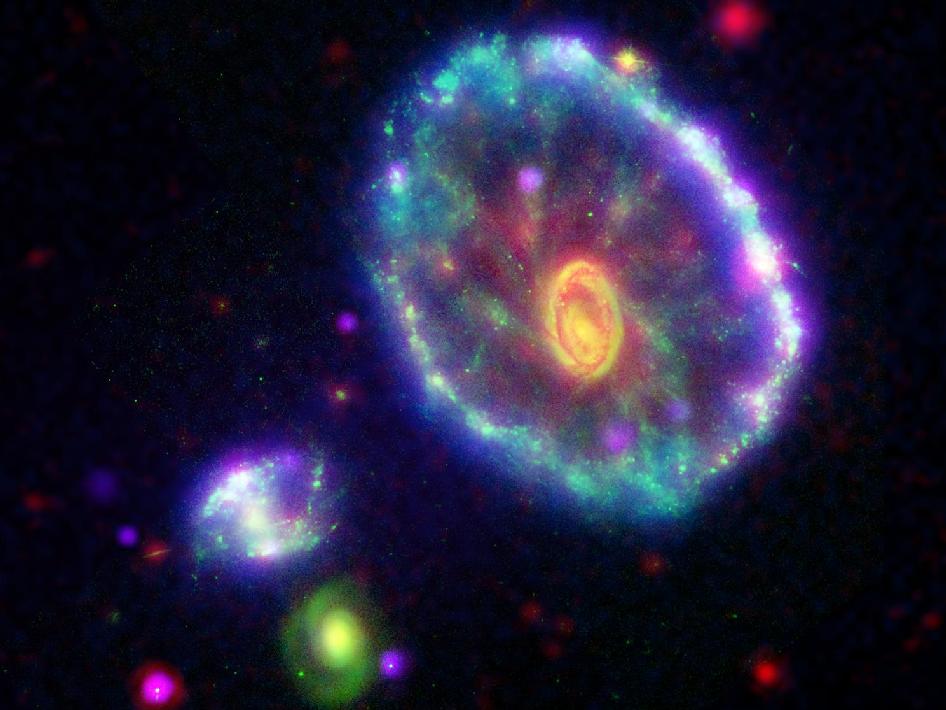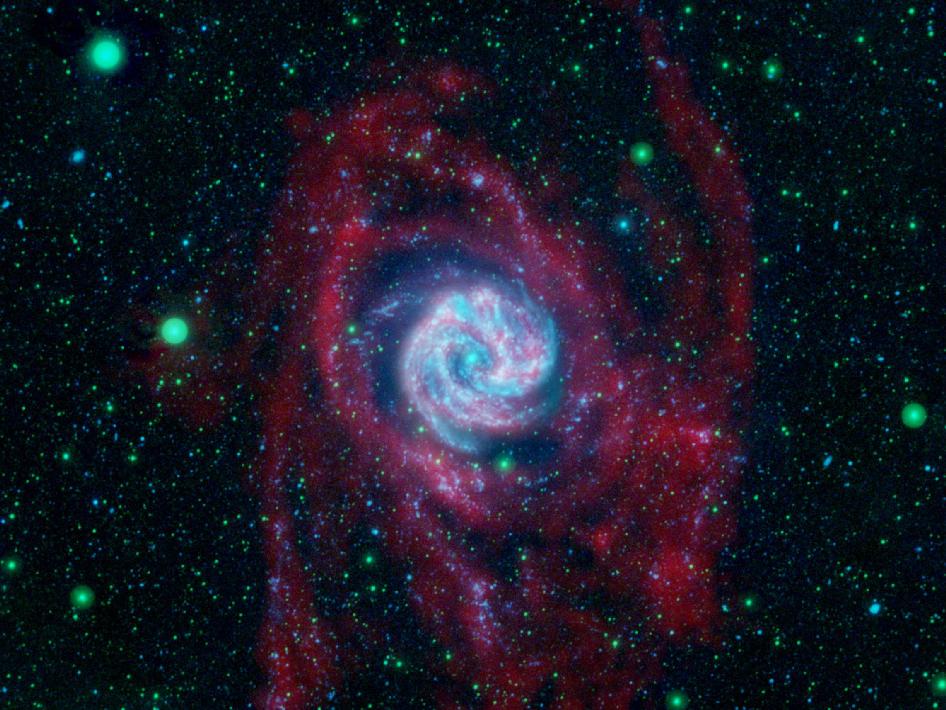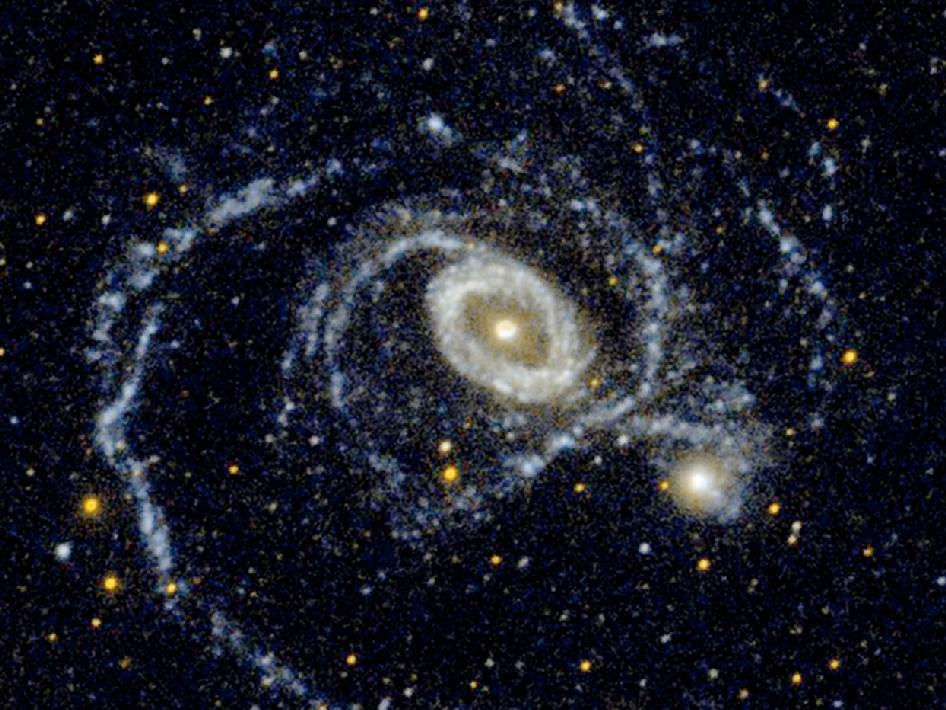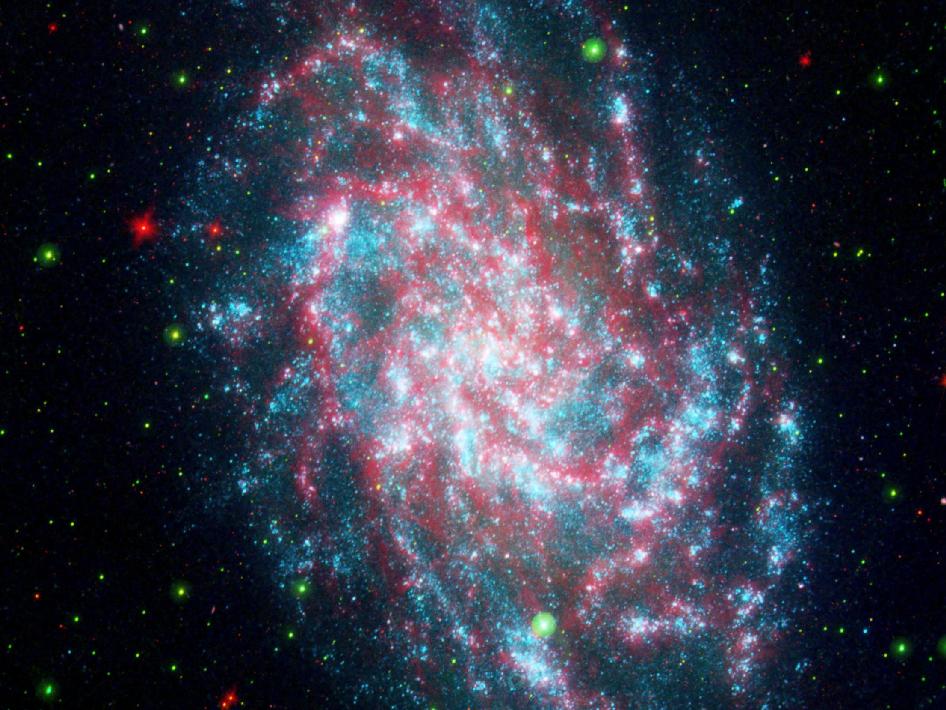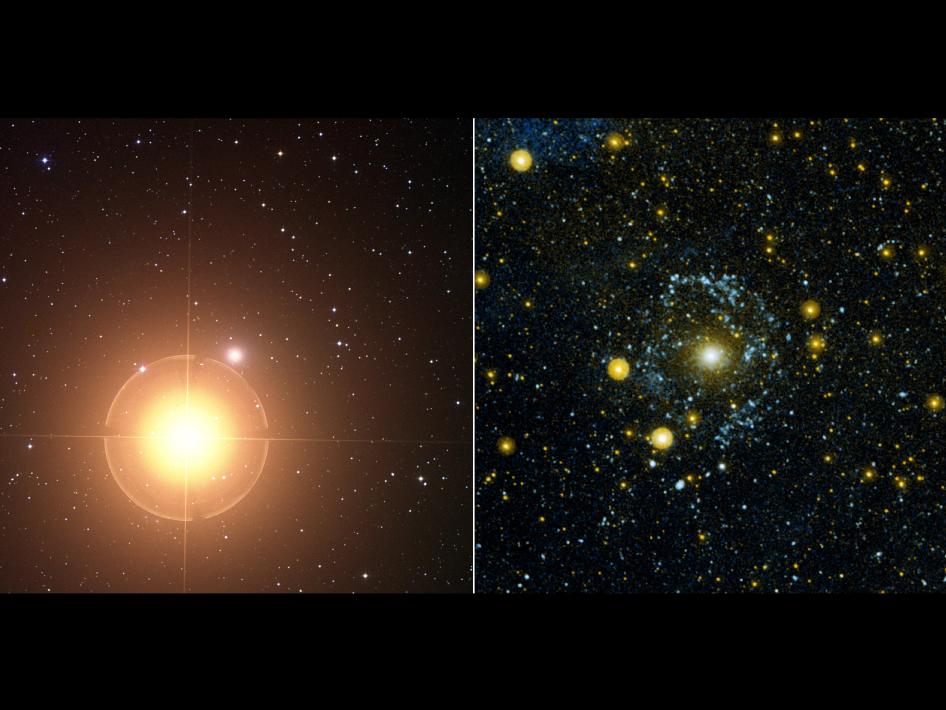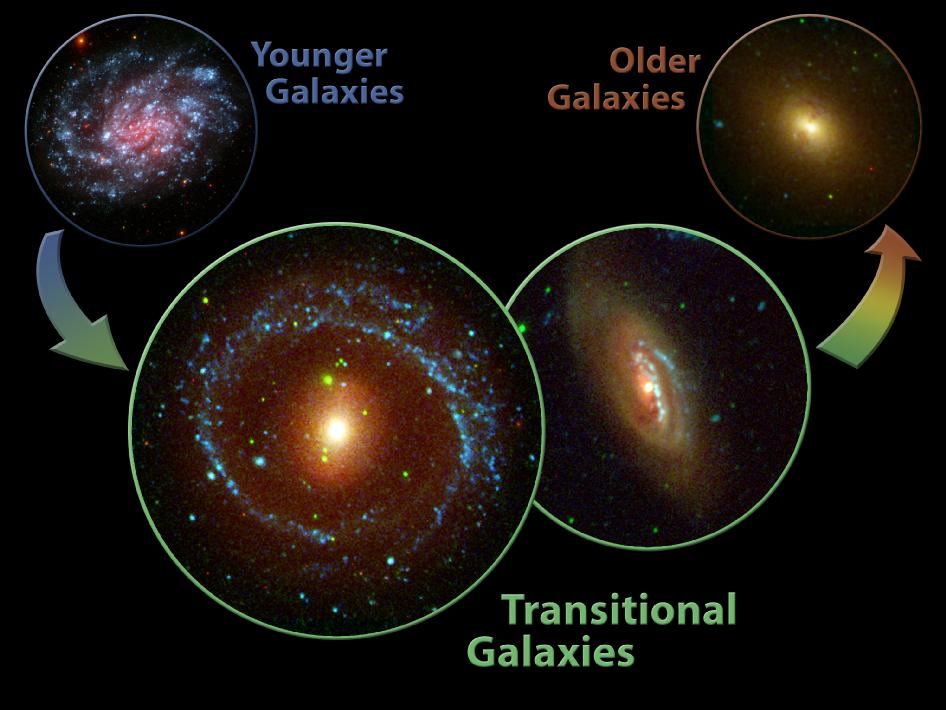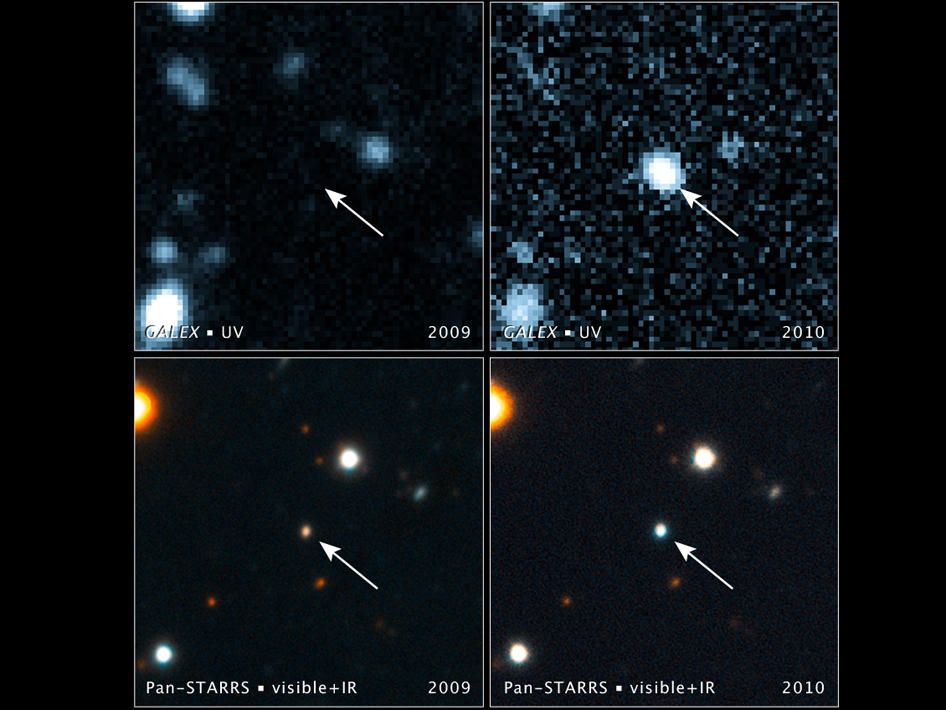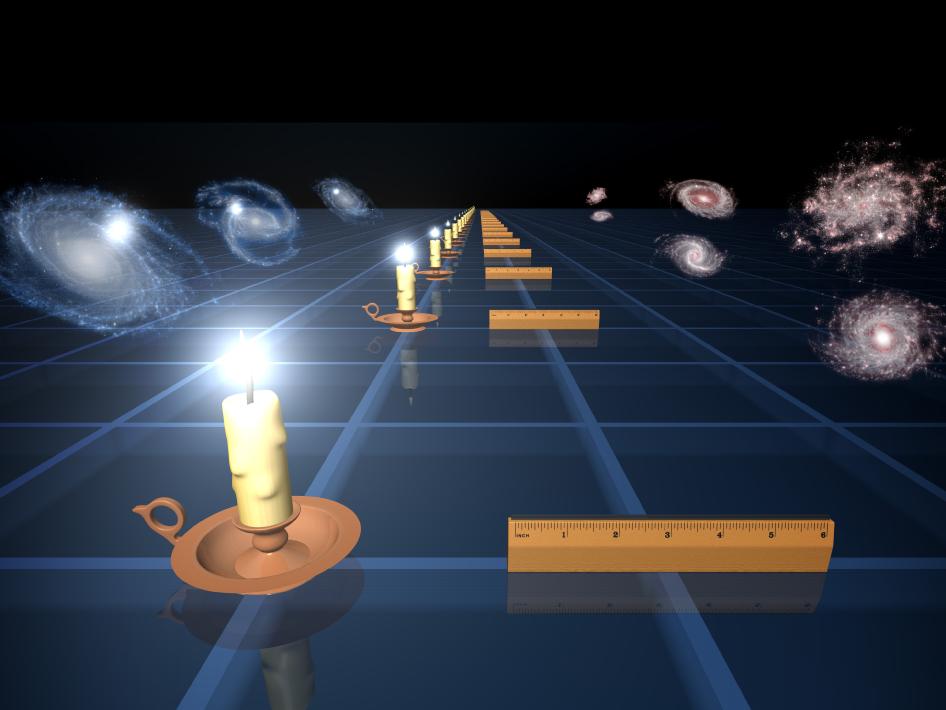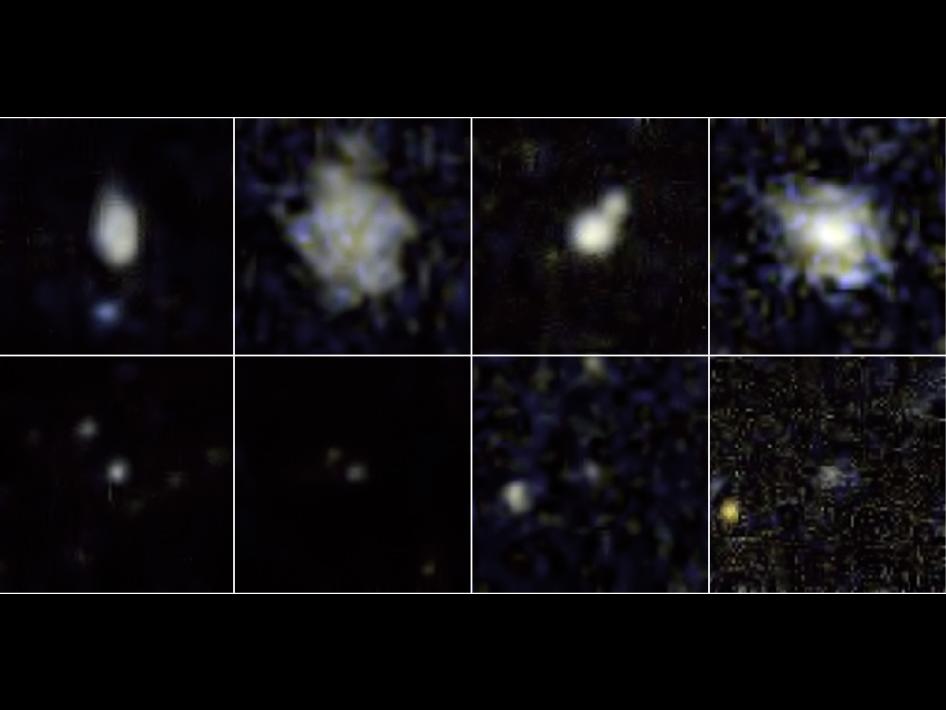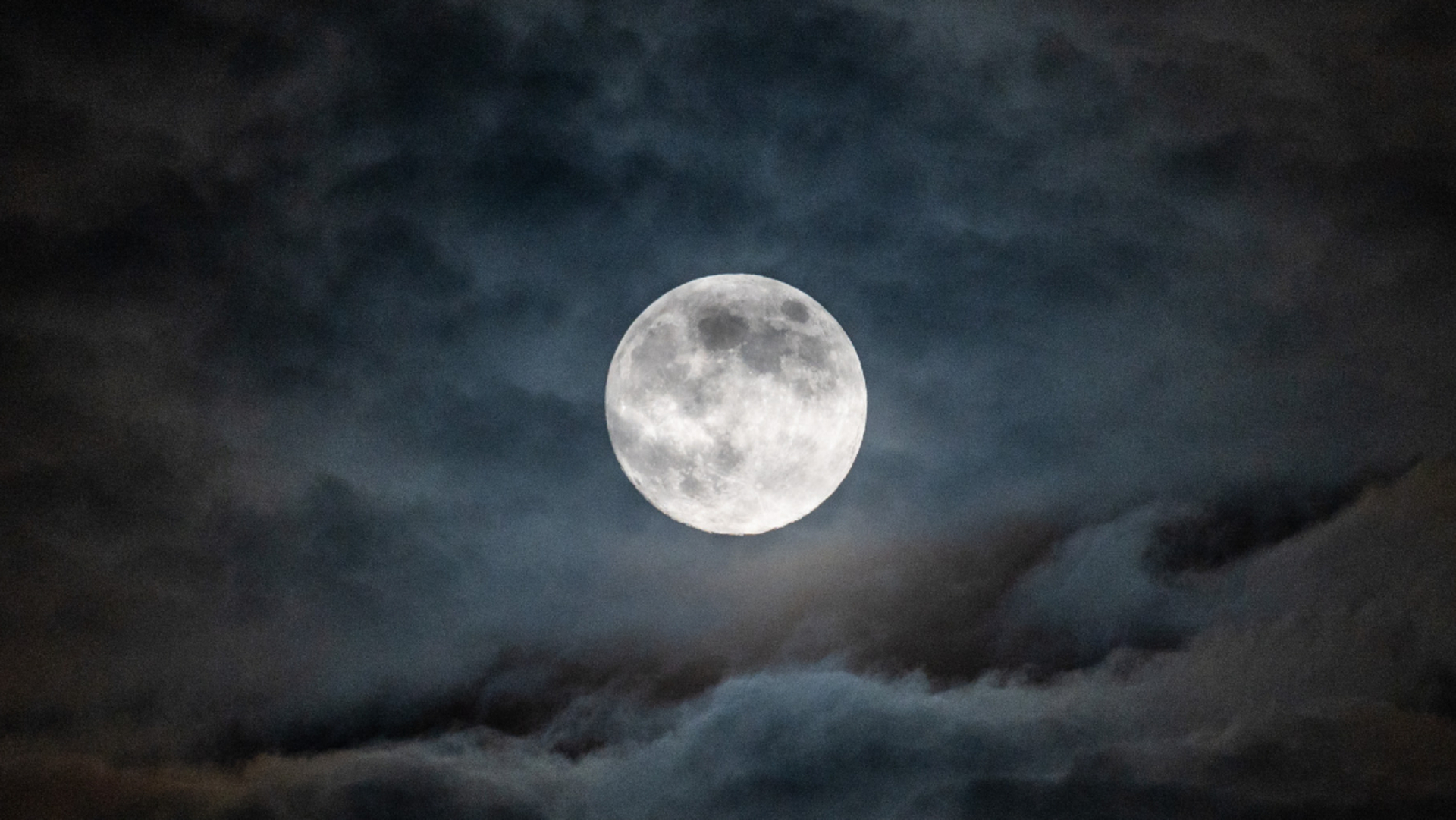Photos: Galaxy Images from NASA's GALEX Space Telescope
Cosmic Cartwheel of Color
This image of the Cartwheel galaxy shows a rainbow of multi-wavelength observations from NASA missions, including the Galaxy Evolution Explorer (blue), the Hubble Space Telescope (green), the Spitzer Space Telescope (red) and the Chandra X-ray Observatory (purple).
Star Formation in the Suburbs
A galaxy sprouts stars far from its central hub, as seen here where the blue dots line the red, spindly, spiral arms. Ultraviolet data from the Galaxy Evolution Explorer are color-coded blue and green, and radio observations from a ground-based telescope are red. This image was released April 16, 2008.
It Takes Two to Tango
Astronomers suspect that this pair of galaxies is locked in a gravitational dance. In this ultraviolet image, a spiral arm from the central galaxy appears to be wrapped around the smaller galaxy, located to its lower right. This image was released July 28, 2006.
Dissecting a Galaxy
Dissecting a Galaxy By combining ultraviolet data from the Galaxy Evolution Explorer with infrared observations from NASA's Spitzer Space Telescope, astronomers get a clear picture of the various components of a galaxy. In this image, the dust detected in infrared light is shown in red, while stars detected in ultraviolet light are blue. This image was released April 28, 2009.
Ghostly Galaxy
These images show the galaxy nicknamed "Ghost of Mirach" in visible-light (left) and in ultraviolet (right) as seen by the Galaxy Evolution Explorer. A ring around the galaxy -- which is the white spot in the center of both images -- seems to "materialize" in the ultraviolet view. This image was released Oct. 31, 2008.
Watching Galaxies Grow Old
Observations from the Galaxy Evolution Explorer allowed astronomers to trace the development of galaxies, from their wild, youthful days to their more settled, older years.
Black Hole Swallows a Star
These images, taken with NASA's Galaxy Evolution Explorer and the Pan-STARRS1 telescope in Hawaii, show a brightening inside a galaxy caused by a flare from its nucleus. The arrow in each image points to the galaxy. The flare is a signature of the galaxy's central black hole shredding a star that wandered too close.
Breaking space news, the latest updates on rocket launches, skywatching events and more!
The Beginning of the End of Star Formation
Time is running out for the galaxy NGC 3801, seen in this composite image combining light from across the spectrum, ranging from ultraviolet to radio. NASA's Galaxy Evolution Explorer and other instruments have helped catch the galaxy NGC 3801 in the act of destroying its cold, gaseous fuel for new stars. Astronomers believe this marks the beginning of its transition from a vigorous spiral galaxy to a quiescent elliptical galaxy whose star-forming days are long past.
How to Measure the Universe
This diagram illustrates two ways to measure how fast the universe is expanding. In the past, distant supernovae, or exploded stars, have been used as "standard candles" to measure distances in the universe, and to determine that its expansion is actually speeding up. The supernovae glow with the same intrinsic brightness, so by measuring how bright they appear on the sky, astronomers can tell how far away they are. This is similar to a standard candle appearing fainter at greater distances (left-hand illustration).
Little Galaxies Pack a Big Punch
NASA's Galaxy Evolution Explorer is helping to solve a mystery — why do the littlest of galaxies produce the biggest of star explosions, or supernovae? These postage-stamp images were taken by the ultraviolet-sensing telescope — the top row shows four galaxies that each produced a typical supernova, while the bottom row shows four galaxies that each produced an ultra-bright supernova. All of the galaxies are located at the very center of the images. The top-row galaxies are roughly the size of our Milky Way galaxy.

Tariq is the award-winning Editor-in-Chief of Space.com and joined the team in 2001. He covers human spaceflight, as well as skywatching and entertainment. He became Space.com's Editor-in-Chief in 2019. Before joining Space.com, Tariq was a staff reporter for The Los Angeles Times covering education and city beats in La Habra, Fullerton and Huntington Beach. He's a recipient of the 2022 Harry Kolcum Award for excellence in space reporting and the 2025 Space Pioneer Award from the National Space Society. He is an Eagle Scout and Space Camp alum with journalism degrees from the USC and NYU. You can find Tariq at Space.com and as the co-host to the This Week In Space podcast on the TWiT network. To see his latest project, you can follow Tariq on Twitter @tariqjmalik.
